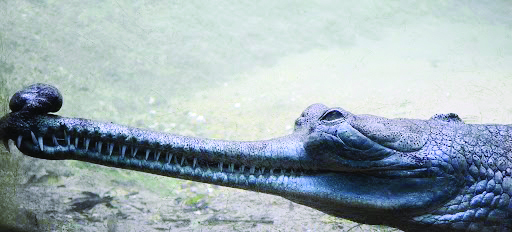With aim to augment its population, Forest dept releases 37 gharials

Kolkata: The state Forest department has recently released 37 gharials at Tiktikipara under Jalangi Block in Murshidabad, in a distributary of the Ganga/Padma River with the aim of augmenting its population.
The release assumes significance in the backdrop of human activities, including encroachment, depletion of food sources, commercial fishing, poaching and riverbed siltation due to deforestation accelerating the decline of gharial populations in the region.
“The gharials were bred in captivity at Rasikbeel under the Cooch Behar Division. The release followed proper protocol, with a site suitability report obtained from WWF-India,” a senior official of the state Forest department said.
The gharial, also known as the fish-eating crocodile, is currently facing critical endangerment, with its global population dwindling to less than 1,500 in the wild.
Historically, gharials were abundant across major river systems in the northern Indian subcontinent, but their population sharply declined to just 2 per cent of their historical range by the mid-1970s. India has launched captive breeding programmes since the early years.
The gharial is renowned for its distinctive physical attributes and demeanour. Physically, it exhibits a lean, streamlined body, designed for swift aquatic movement. Their olive-green to brownish-gray skin is adorned with unique patterns and ridges, providing effective camouflage amidst riverine environments. Particularly distinctive are the prominent, elongated scales running along their dorsal surface, adding to their prehistoric allure.
Despite their formidable appearance, gharials are generally docile creatures, preferring to avoid confrontation unless threatened. Their temperament reflects a reserved attitude, often basking on riverbanks with an air of tranquility. They display exceptional swimming prowess, propelled by powerful tail strokes. Their webbed feet aid in navigation, while their eyes and nostrils positioned atop their heads allow for stealthy underwater hunting. Typically found in the upper reaches of river systems in northern India, gharials prefer sandy beach areas to lay their eggs.
Typically, adult male gharials weigh between 160 and 180 kg, reaching lengths of up to 20 feet (6 m), while females grow to approximately 15 feet (5 m) in length.



